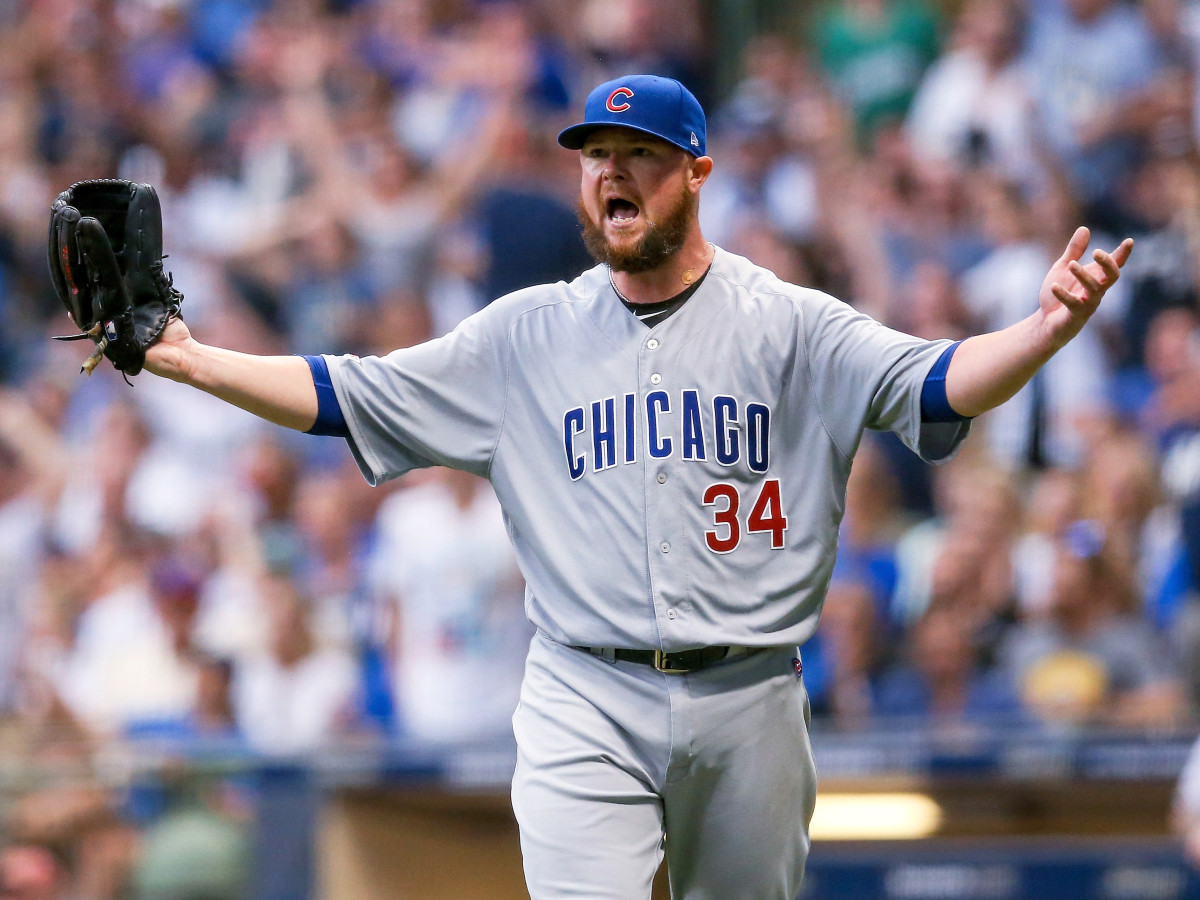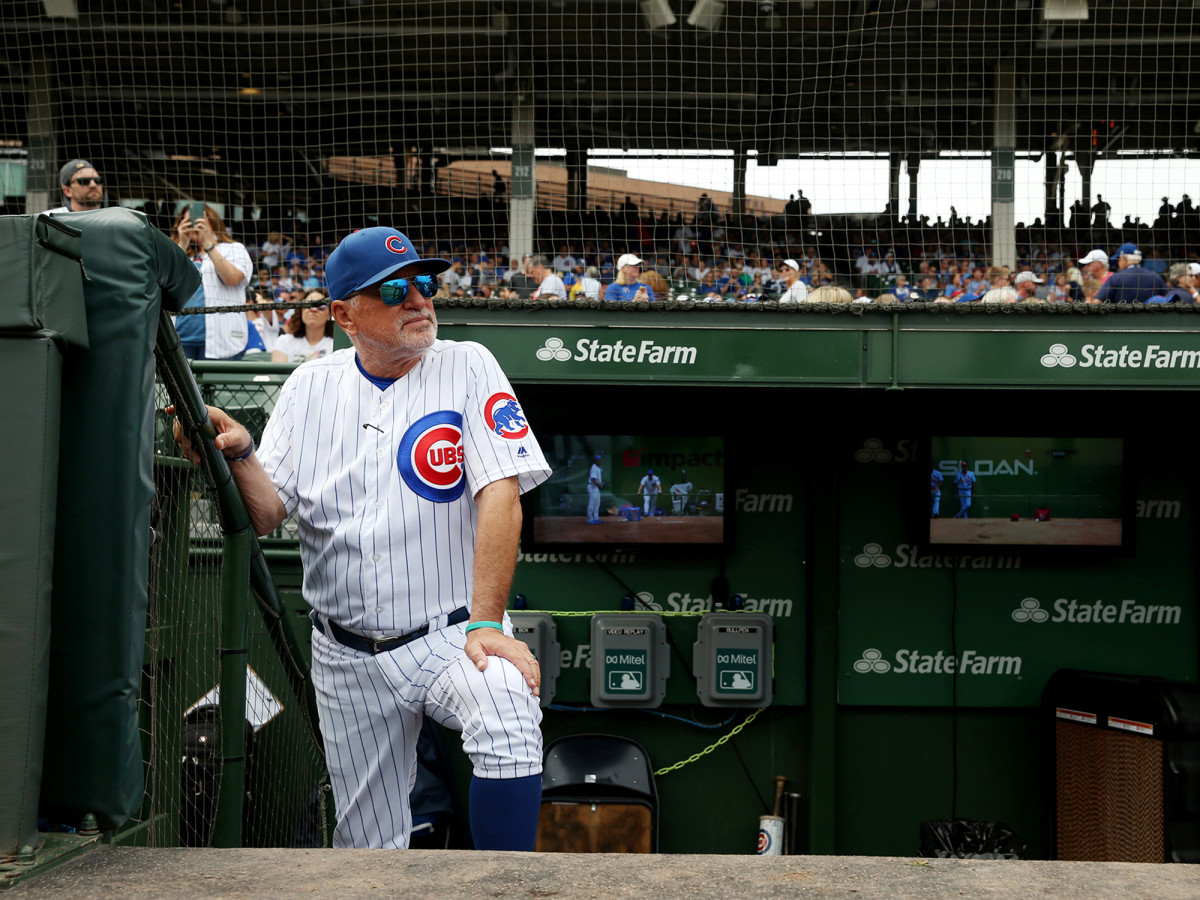Dynasty Deferred: More Than Just the Cubs' Playoff Hopes Died This Weekend

The Cubs—and, by extension, the would-be dynasty that looked all but certain upon the final out of the 2016 World Series—are on life support. Undone by consecutive ninth-inning Cardinals comebacks over the weekend, Chicago has dropped six straight games, falling out of NL Central contention and putting its playoff hopes in a perilous place: They now face a four-game deficit for the second wild-card (currently held by the surging Brewers) with just five games to go. If you’d like a dramatic visual representation of what that kind of skid does to your postseason chances, you’re in luck:
Cubs playoff odds are down to 2.2%.
— Sarah Langs (@SlangsOnSports) September 23, 2019
Through Sept. 16, their last win, their playoff odds were 76.7%. pic.twitter.com/mJwr6ldkDp
It’s safe to say, barring a miracle, October won’t feature a trip to Wrigley Field for the first time in five years.
This late September flameout continues what’s been a long and slippery slide for the Cubs since winning it all. Each season has provided diminishing returns: a loss in the NLCS to the Dodgers in ‘17, a loss to the Rockies in the wild-card game last year (after gagging away the division on the season’s final day to Milwaukee, too). This year’s Cubs won’t even get the opportunity to be part of a network’s postseason montage—an embarrassing outcome for a franchise that was poised to rule over the sport for half a decade.
At least, that’s what was easy to imagine, given the young stars celebrating on the field in Cleveland as they closed out Game 7. In Anthony Rizzo, Kris Bryant, Javy Baez, Kyle Schwarber, Willson Contreras and Addison Russell, the Cubs’ player development machine was churning out success at nearly every position. Add to that a capable rotation fronted by Jon Lester, Jake Arrieta and Kyle Hendricks, a well-liked manager in Joe Maddon and a savvy front office, and Chicago seemingly had all the ingredients for a long run atop baseball.
But while Rizzo, Bryant and Baez have continued to shine and thrive, the rest of the Cubs’ roster now feels oddly patchwork and thin for how rich and smart everyone in charge is. The same farm system that produced that bevy of All-Stars has stalled out. The 2013 draft resulted in Bryant and little else; the same with ‘14 and Schwarber. The next year was even thinner, yielding only utility man Ian Happ so far, but that’s a bumper crop compared to ‘16 and ‘17, which have contributed no major leaguers of yet. (Last year already looks better by virtue of shortstop Nico Hoerner, the club’s top prospect who was called up in early September.) In fairness, the former draft was only three years ago, and Chicago’s first pick that summer was No. 104 overall. But given how many college players the Cubs tabbed those two years, you would expect at least a few would’ve bubbled up to the majors by now.
That failure to develop from within is best seen in the struggles of former top prospects like Russell, Happ, Albert Almora (the No. 6 pick in 2012), Jorge Soler, Arodys Vizcaino, Billy McKinney and others who failed to deliver on their promise. Trades didn’t help: The price for Aroldis Chapman and the championship he helped secure was Gleyber Torres, now mashing for the Yankees, and the 2017 trade for Jose Quintana cost the Cubs their best outfield prospect in Eloy Jimenez (as well as hard-throwing righty Dylan Cease). But the end result is that as holes have opened on the major league roster, Chicago hasn’t been able to fill them with internal options as easily as years previous.

Compounding that is ownership’s hard-to-understand decision to tighten purse strings right in the middle of the team’s competitive window. Perhaps feeling burned by the sizable contracts handed out to Jason Heyward, Yu Darvish and Tyler Chatwood that mostly haven’t paid off, the Ricketts family basically sat out last offseason. Given the opportunity to pursue in-their-prime superstars like Manny Machado and Bryce Harper, Chicago opted instead for far less; the $5 million given to Daniel Descalso was the front office’s biggest expenditure of the winter.
When you’re a team already struggling to keep pace with the sport’s other elite clubs, it’s probably not the best idea to have a light-hitting backup infielder be your top offseason addition.
(The Cubs did make a sizable midseason commitment in giving a three-year deal to Craig Kimbrel, who has subsequently stunk. But that’s a move that they could and should have done in the offseason, when their need for a closer was just as big, and perhaps starting the season in April as opposed to July would’ve made a big difference for Kimbrel.)
Amid the stagnation of the farm system and the financial retrenchment, important pieces on the Cubs’ roster slumped this year. Lester looks every bit of his 35 years and 2,500-plus innings, with a 5.55 ERA in the second half. Quintana has been league average overall. Heyward’s 100 OPS+ represents his best mark as a Cub. Russell was awful when on the field and frankly shouldn’t be on it, given the reprehensible way he’s handled the aftermath of his domestic violence suspension. Ben Zobrist was absent for most of the season to deal with a nasty divorce. Aside from David Bote and Victor Caratini, the bench provided no help. Nor did a bullpen fronted by Kimbrel and his 6.53 ERA, and featuring only a few reliable arms amid a sea of mediocrity.
To some degree, these kinds of things happen to every team. But the Cubs seemed especially ill-equipped to handle them. That made issues with the topline stars that much more ruinous, like a knee injury to Bryant that didn’t cost him time but did result in him hitting .229 from late July through early September, or the broken thumb that knocked Baez out for three weeks in September. Things were so dire for Chicago that Rizzo, who suffered a gnarly sprained ankle last week, fought his way back from the injury within a few days and even hit a dramatic homer against St. Louis. That Willis Reed-style return didn’t inspire much, though: The Cubs lost that game anyway.

So where does Chicago go from here? Maddon in particular seems as good as gone: His contract expires at the end of the season, and nothing said or done by the front office over the last year suggests a return is in the cards. Payroll-wise, the team will shed roughly $50 million in contracts, though some of that will be offset by team options on Rizzo and Quintana, and some of those losses aren’t welcome—in particular Steve Cishek, Brandon Kintzler and midseason pickup Nicholas Castellanos, who has raked since coming to the North Side (.332/.368/.663).
But the bigger question now surrounding the Cubs as they wait to take their place alongside the rest of MLB’s also-rans is whether a larger organizational and/or roster shakeup is in the offing—or if, in fact, such a move would be the right way to go.
In terms of the team on the field, it’s unclear what moves exactly Chicago could make that would turn things around. If the thought of Bryant’s looming arbitration raises or free-agent payday—he has two seasons of team control left—have the bosses spooked, maybe trade rumors will follow him this winter. But it’s hard to see how the Cubs get better by dealing away their best and most reliable hitter, especially with teams increasingly unwilling to surrender the top prospects you would look for in that kind of trade. Is moving Schwarber, a bat-first player whose defense is average at best, or Contreras, who rates poorly by advanced metrics behind the plate, something that would help, given how losing each would weaken the lineup substantially?
Aside from trading those three, there’s not much else Chicago could do that would make much of an impact, unless some other team wants to swallow the $86 million still owed to Heyward over the next four years. And given how hard a pass the Cubs gave to Machado and Harper (and everyone else) last winter, it’s unlikely that the team will reverse course and re-open the checkbook this offseason, though maybe the sting of missing the playoffs shames the Ricketts into doing so. (Ask that of your Magic 8-Ball, though, and you’ll probably get an “Outlook Not So Good” in response.)
But what of the front office? Oct. 12 will mark eight years of Theo Epstein in charge of the Cubs, along with his chief lieutenants Jed Hoyer and Jason McLeod. The latter was recently promoted from running scouting and player development to senior vice president of player personnel, which translates to a bigger role in building the major league roster. That could portend bigger changes further down the organizational chart, or maybe just minor reassignments.
Cubs brass informed Maddon at a meeting before the year that if the team didn’t perform to hopes that there might well be big changes. Presumably that meant not just the manager.
— Jon Heyman (@JonHeyman) September 22, 2019
But in the light of this season’s disappointing finish and the team’s struggles to build depth and add the right major league personnel, it’s worth wondering if this particular front office knows how to fix what’s wrong. In an era where teams do everything they can to put the ball in the air, the Cubs have the fifth-highest ground-ball rate in the majors. They swing and miss more than anyone but the Tigers and White Sox and have the worst contact rate. Their pitchers have the second lowest average fastball velocity in the bigs, throw the fewest sliders and rank 12th in the NL in swing-and-miss rate.
That’s not to say that, because the Cubs rank poorly in all those categories, they’re behind the curve. But the game’s most successful teams are the ones throwing hard and avoiding strikeouts, or ramping up slider usage, or at least preaching those tenets in the minors. It’s likely the Cubs are doing that, as this report from The Athletic’s Patrick Mooney and Sahadev Sharma on McLeod’s promotion suggests. But it is notable that, at the major league level, Chicago is failing in those areas in which teams like Houston, Los Angeles and New York are excelling.
Those are the clubs that have stolen the Cubs’ crown since that World Series win and, in the process, now sit atop the game as its power brokers. For Chicago to get back to that summit may be as simple as adding some pitchers this offseason and hoping for better injury luck. But if the the last three years suggests anything, it’s that the solution may be far more complicated—and perhaps far harder to envision or reach than those dreams of a dynasty.
